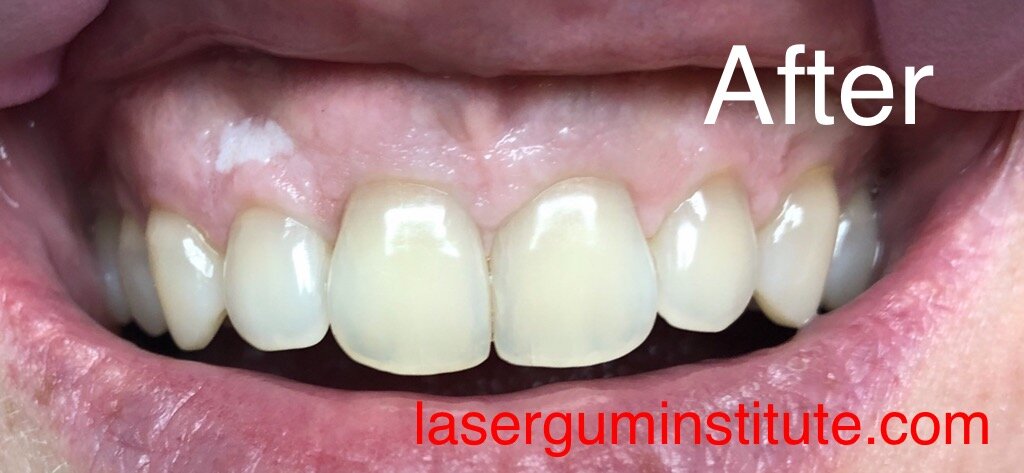Gum Recession and Tissue Grafting
Your gums may have receded for a variety of reasons, including aggressive tooth brushing or periodontal disease. You may not be in control of what caused the recession, but prior to treatment, your periodontist can help you identify the factors contributing to the problem. Gum grafting will cover the exposed roots to protect them from decay, help reduce tooth sensitivity, and improve the aesthetics of your smile. Whether you have a gum graft to improve function or aesthetics, you’ll probably receive the benefits of a beautiful new smile and improved periodontal health—your keys to smiling, eating, and speaking with comfort and confidence.
Gum Recession
Gum recession is caused by advanced gum disease. When gingivitis goes untreated, gum disease (also called periodontitis) will cause gums to pull away from the teeth, leaving deep pockets where bacteria can grow and damage the bone that supports the teeth. Gums can also shrink back from the teeth, making the teeth look longer. Teeth may then become loose, fall out, or have to be pulled out by a dentist.
Do you have gum recession?
Gum recession does not happen overnight. You may not even notice that your gums have receded, as it is a very slow, gradual process. However, without a gum tissue graft, recession can have a detrimental effect on the health and function of your teeth. If you have been diagnosed with gingivitis or periodontal disease, it is important to notice if:
- You have sensitivity to hot or cold temperatures, or even to sweet, spicy, or sour foods
- Your teeth appear longer than normal
- Spaces between your teeth seem to grow
- The roots of your teeth begin to show
Gum Tissue Grafting
When you come to our office for your grafting procedure, a local anesthetic will be given to numb the areas involved. You may also receive medicine to help you relax. We want your experience in our office to be as comfortable as possible, so let us know if there is anything you need during your procedure.
Depending on your specific needs, your periodontist will perform one of three different types of gum tissue grafts.
- Connective tissue grafts – The most common method to treat root exposure, connective tissue grafting involves your periodontist cutting a flap of skin on the roof of your mouth (or palate) and removing tissue from under the flap, called sub-epithelial connective tissue. This tissue is then stitched to the gum tissue surrounding the exposed root. After the connective tissue, or graft, has been removed from under the flap, the flap is then stitched back down.
- Free gingival grafts – Similar to a connective tissue grafting, a free gingival graft involves the use of tissue from the roof of the mouth. But instead of making a flap and removing tissue under the top layer of flesh, a small amount of tissue is removed directly from the roof of the mouth and then attached to the gum area being treated. This method is used most often in people who have thin gums to begin with and need additional tissue to enlarge the gums.
- Pedicle grafts – In this procedure, instead of taking tissue from the palate, it is grafted from gum around or near the tooth needing repair. The flap, called a pedicle, is only partially cut away so that one edge remains attached. The gum is then pulled over or down to cover the exposed root and sewn into place. This procedure can only be done if you have plenty of gum tissue near the tooth.
- no graft - Pinhole technique - latest advancement in gum surgery that avoids cutting and stitches. Read more at laserguminstitute.com
Many factors will contribute to your chosen grafting technique. Your periodontist can tell you which method will work best for you, your health, and your smile.


 Website Powered by Sesame 24-7™
Website Powered by Sesame 24-7™